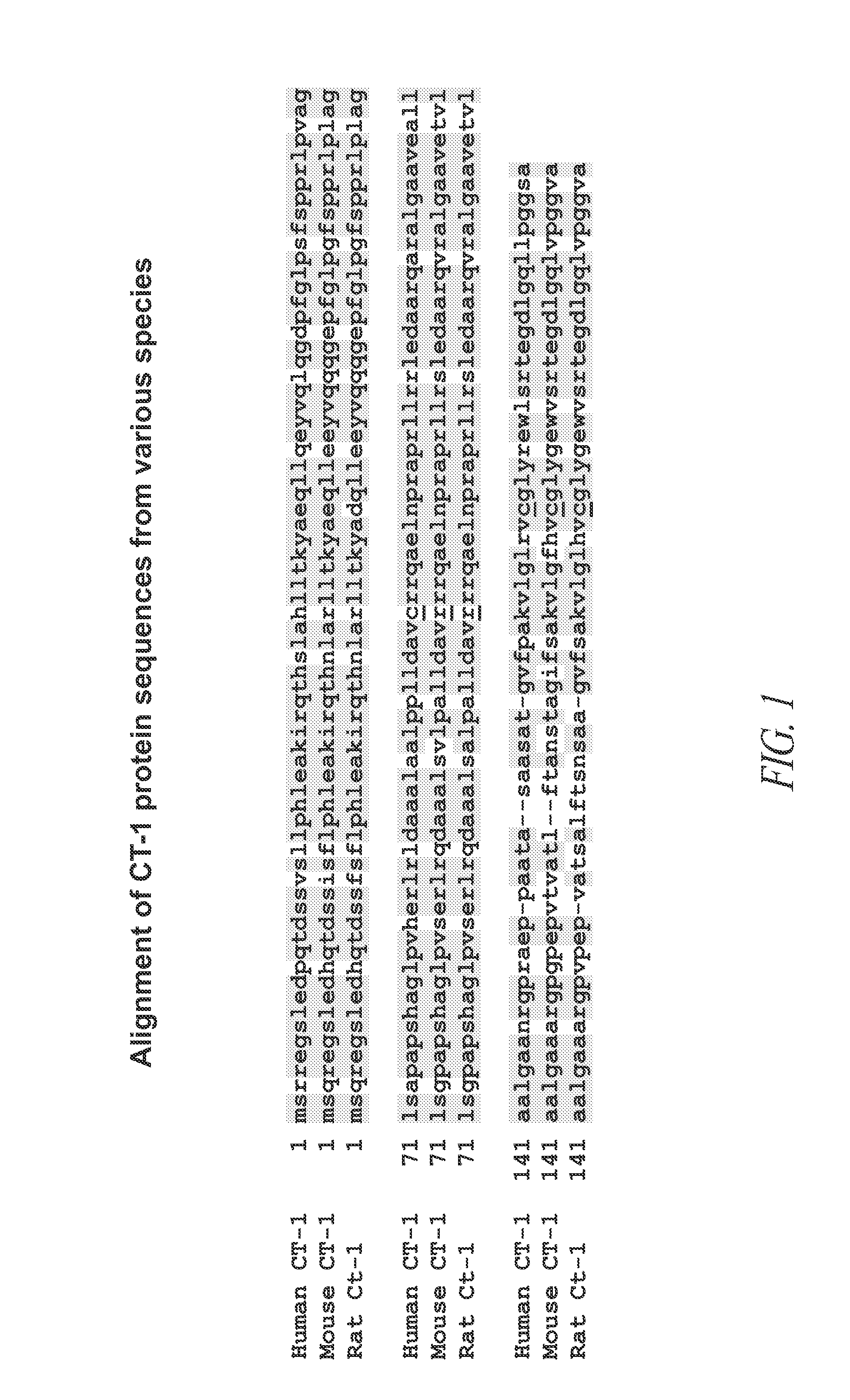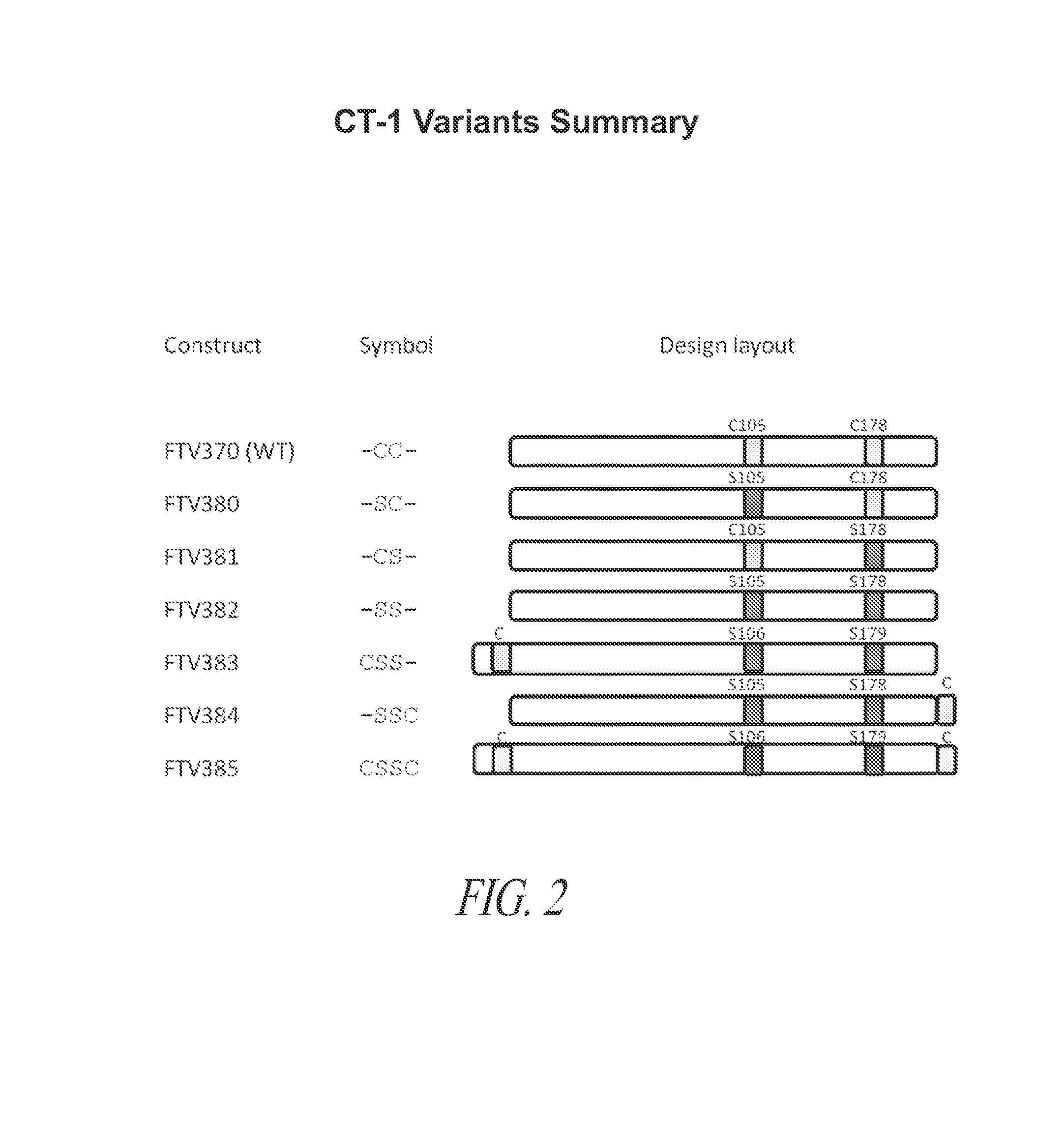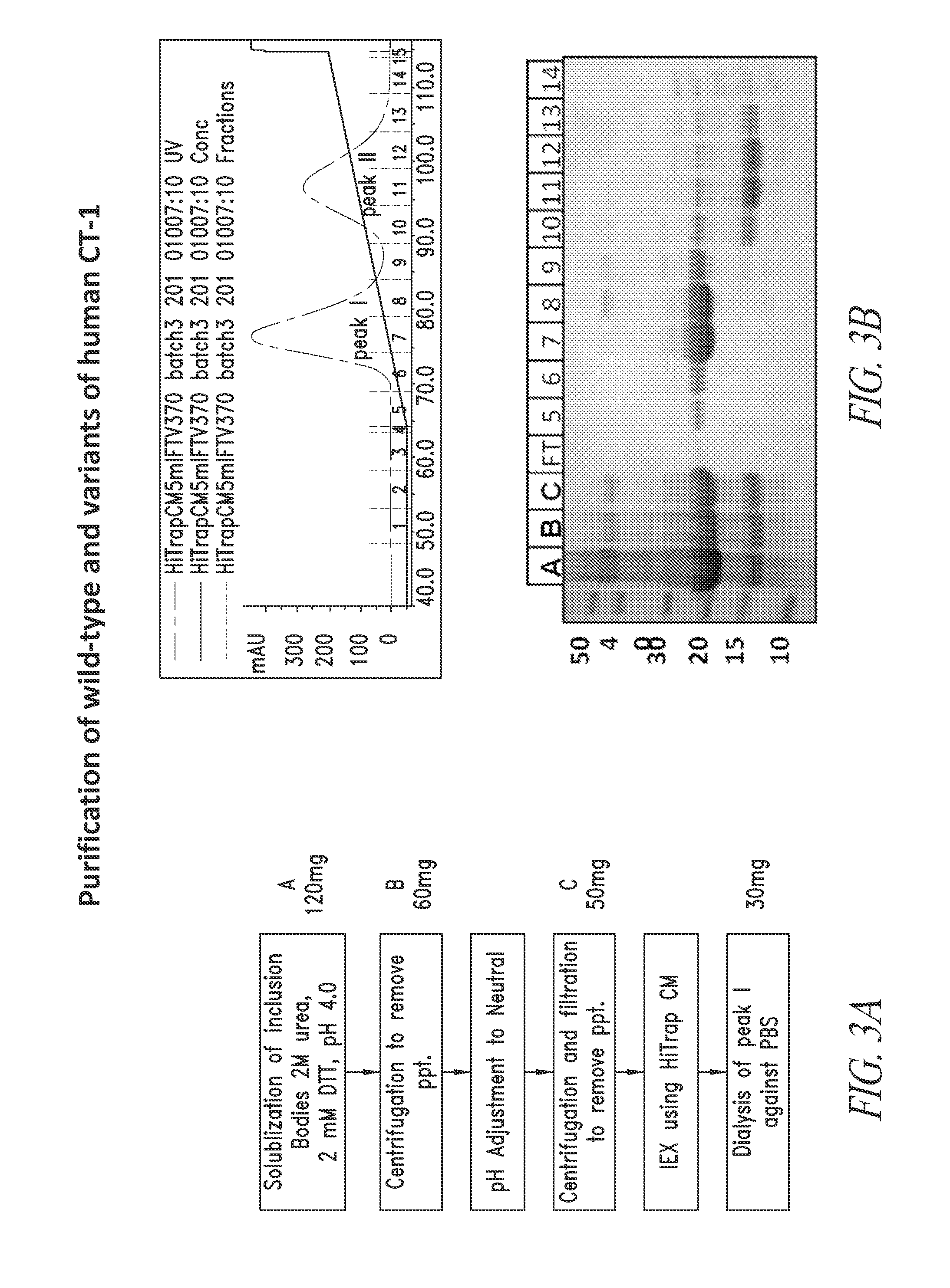Cardiotrophin related molecules for enhanced therapeutics
- Summary
- Abstract
- Description
- Claims
- Application Information
AI Technical Summary
Benefits of technology
Problems solved by technology
Method used
Image
Examples
example 1
Methods
[0349]The wild-type hCT-1 DNA sequence was optimized for bacterial expression and synthesized. The gene was inserted in the pET-27b(+) vector between Nde I and BamH I sites. The C105S and C178S mutants (amino acid position with respect to the naturally occurring CT-1 polypeptide) were prepared using QuikChange site-directed mutagenesis method. The C105S mutant was made from the WT using forward primer 5′-GCTGCTGGATGCAGTTAGCCGTCGTCAGGCAGA-3′ and reverse primer 5′-TCTGCCTGACGACGGCTAACTGCATCCAGCAGC-3′. The C178S mutant and C105S / C178S double mutant was made from the WT and C105S mutant, respectively, using forward primer 5′-AGTTCTGGGTCTGCGTGTTAGCGGTCTGTATCGTGAATG-3′ and reverse primer 5′-CATTCACGATACAGACCGCTAACACGCAGACCCAGAACT-3′. N-terminal cysteine insertion between the N-terminal methionine and adjacent serine was made by PCR amplification of the C105S / C178S double mutant using forward primer 5′-GAGATATACATATGTGCAGCCGTCGTGAAGGTAG-3′ and reverse primer 5′-GCGG...
example 2
Design of Novel Modified CT-1 Polypeptides
[0356]CT-1 is a small (21.5 KDa) secreted cytokine of the IL6 family with potential therapeutic applications in several areas including ischemic disease and regenerative medicine. The low molecular weight of this protein results in a short systemic half-life and bioavailability. Modifications to increase molecular weight such as PEGylation and multimerization would decrease the proteins clearance rate and absorption from a subcutaneous or intramuscular compartments thus extending the systemic half-life and required treatment interval. With such a small signaling protein there is the possibility that random or multiple sites of modification may result in a significant reduction of biological activity and / or stability. In preliminary modification experiments human CT-1 lost both biological activity and stability when primary amines within the protein were modified with reactive groups such as dimethyls linked to reactive N-hydroxysuccinimide (...
example 3
Production of Wild-Type and Novel CT-1 Variants
[0357]Method of Producing Therapeutic CT-1
[0358]A scalable method of production for human CT-1 for therapeutic use has not been described. Such a method should be applicable to GLP / cGMP manufacturing and result in pure, stable, carrier-free protein that has relevant biological activity. The final formulation of the therapeutic CT-1 should ideally be applicable to direct human administration without the requirement for excessive dilution or re-formulation. The present and subsequent examples describe a suitable method for production of therapeutically useful polypeptides having at least one biological activity of CT-1.
[0359]Analysis of the wild-type CT-1 protein suggested there were no mammalian-specific post translational modifications in human CT-1 polypeptide. Therefore, naturally occurring CT-1 and all of the initial CT-1 variants listed in FIG. 2 and SEQ ID NOs: 2-8 were subcloned into expression vectors, transformed into E. coli an...
PUM
| Property | Measurement | Unit |
|---|---|---|
| Fraction | aaaaa | aaaaa |
Abstract
Description
Claims
Application Information
 Login to View More
Login to View More - R&D
- Intellectual Property
- Life Sciences
- Materials
- Tech Scout
- Unparalleled Data Quality
- Higher Quality Content
- 60% Fewer Hallucinations
Browse by: Latest US Patents, China's latest patents, Technical Efficacy Thesaurus, Application Domain, Technology Topic, Popular Technical Reports.
© 2025 PatSnap. All rights reserved.Legal|Privacy policy|Modern Slavery Act Transparency Statement|Sitemap|About US| Contact US: help@patsnap.com



